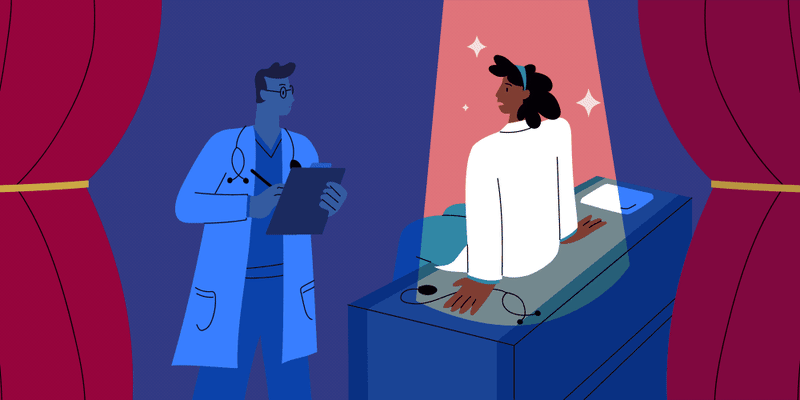The CEO of Press Ganey, Patrick Ryan, says this about patient experience: “Experience is not about happiness. It’s about patients being respected, being communicated with, and having their care coordinated in such a way that they can get the best possible clinical outcome for whatever their circumstances are.”
This is health care and not hospitality, so the goal cannot be happiness. We might be delivering bad news, but the patient can still be satisfied with the care they received. We should be approaching each patient encounter through this lens and it helps to have a framework and plan for starting each encounter.
Start the Visit with a Ritual
How do we make sure we start a visit on the right foot? Before entering the exam room, we need to make sure that we are free of distractions, both external and internal, so the patient knows they have our undivided attention. To help us close our mental browser windows, it helps to have a very brief ritual, so we can remind ourselves of where our attention should be. I personally take a sip of water and then a deep breath.
Introduce Yourself with No Assumptions
Then walk in the door or pull back the curtain and introduce yourself to everybody in the room. We cannot assume that the patient made the appointment or knows who we are. Patients are often nervous and uncomfortable; nervous because they do not know what to expect from the interaction, and uncomfortable from whatever is bringing them in to see the doctor. This does not put them in the best frame of mind for figuring out who this new person is that just walked into the room. Make it easy. Introduce yourself with your name and your title. Ask them what they want you to call them.
Notice Eye Colors
Since we are sometimes introducing ourselves to entire families, that may mean many introductions in a single day. If we are running behind, we may rush through this and forget to really look at the person. The trick I was taught is to make sure we notice each person’s eye color. This is not going into the physical exam, but it ensures each introduction is long enough and thoughtful enough that the person feels some connection (without being so long that it feels creepy).
Minimize the Computer as a Barrier
History taking is typically next, which may mean a physician’s least favorite activity: data entry at the computer. To minimize the computer as a physical barrier, try to have it positioned off to the side. If possible, sit at eye-level, or as close as possible, and make eye contact whenever possible. I use dictation software and others use scribes. Hopefully ambient AI will be the standard soon and eliminate this completely.
Acknowledge Their Discomfort
Another way to connect with the patient during an encounter is to acknowledge the discomfort they are in, either from whatever has brought them in, their anxiety about their condition, or even how hard it is to find parking. This shows that you understand them at least a little better than before you walked in the room.
Thank Patients for Their Patience
If the patient happens to be waiting a long time, as they often are, a good way to start the visit would be to thank them for waiting and their patience, rather than apologizing and starting off on the negative. When waiting for a doctor, a patient will often perceive this to mean that their time is not valued. This is not the venue to discuss why we run behind. We all know the reasons, but the perception remains, so we need to use all the communication tools at our disposal to make sure that once that interaction begins, the patient feels that they are the most important person in that moment. It also helps to have staff keep people informed about their wait time.
By adopting this intentional approach at the beginning of each visit, I have noticed a significant shift in my mindset, feeling like I have more control over office hours, and enhancing overall efficiency. This has not gone unnoticed by my patients, whose experiences have markedly improved. A testament to this is the frequent feedback I receive about new patients being referred from their local Facebook groups. This ripple effect of positivity underscores the profound impact of starting each visit with intention, enriching both my practice and my patients’ health care journeys.
How do you improve patient connection and feedback? Share in the comments.
Bradley B. Block, MD is a private practice otolaryngologist and partner at ENT and Allergy Associates their Garden City, NY office. He is also the creator and host of the Physician's Guide to Doctor podcast, which covers "everything we should have been learning while we were memorizing Kreb's Cycle." Find him @physiciansguide on Instagram and Twitter.
Image by Irina Strelnikova / Shutterstock







